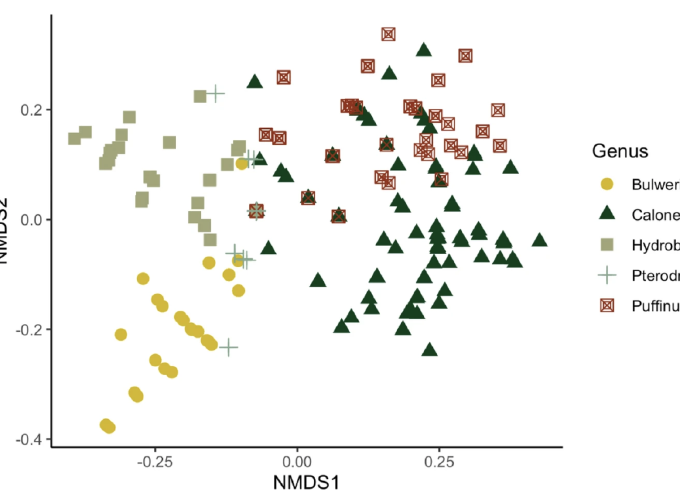Diversity and structure of feather mite communities on seabirds from the north–east Atlantic and Mediterranean Sea

Diversity and structure of feather mite communities on seabirds from the north–east Atlantic and Mediterranean Sea
Abstract
The richness and structure of symbiont assemblages are shaped by many factors acting at different spatial and temporal scales. Among them, host phylogeny and geographic distance play essential roles. To explore drivers of richness and structure of symbiont assemblages, feather mites and seabirds are an attractive model due to their peculiar traits. Feather mites are permanent ectosymbionts and considered highly host-specific with limited dispersal abilities. Seabirds harbour species-rich feather mite communities and their colonial breeding provides opportunities for symbionts to exploit several host species. To unravel the richness and test the influence of host phylogeny and geographic distance on mite communities, we collected feather mites from 11 seabird species breeding across the Atlantic Ocean and Mediterranean Sea. Using morphological criteria, we identified 33 mite species, of which 17 were new or recently described species. Based on community similarity analyses, mite communities were clearly structured by host genera, while the effect of geography within host genera or species was weak and sometimes negligible. We found a weak but significant effect of geographic distance on similarity patterns in mite communities for Cory’s shearwaters Calonectris borealis. Feather mite specificity mainly occurred at the host-genus rather than at host-species level, suggesting that previously inferred host species-specificity may have resulted from poorly sampling closely related host species. Overall, our results show that host phylogeny plays a greater role than geography in determining the composition and structure of mite assemblages and pinpoints the importance of sampling mites from closely-related host species before describing mite specificity patterns.